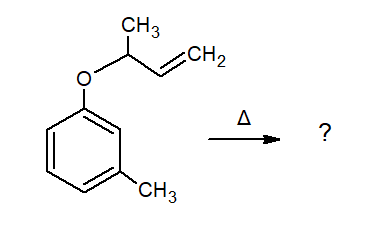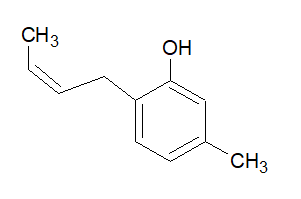This is an example of Claisen rearrangement, property of allyl vinyl/phenyl ethers.
I believe that the allylic migration should take place to the position ortho to both $\ce{-CH3}$ and $-\ce{OR}$ because:
- There's more electron density there due to the presence of electron donating group $\ce{-CH3}$
and I read this in March under Claissen rearrangement:
Since the Claisen rearrangement doen't involve ions, it shouldn't greatly depend on the presence or absence of substituent groups on the ring. This is the case. Electron donating groups increase the rate and electron withdrawing groups decrease it, but the effect is small.
So I expect the product to be 2-[(2E)-but-2-en-1-yl]-3-methylphenol:
However my teacher made us write the product to be 2-[(2Z)-but-2-en-1-yl]-5-methylphenol:
His rationalisation was that the carbanion like species attacking the allyl group is more stable at the place away from methyl group.
But my question is that if this reaction is single step, followed by tautomerism why should it even depend on the carbanion like species which isn't even formed.



